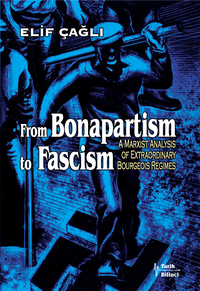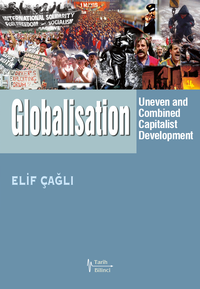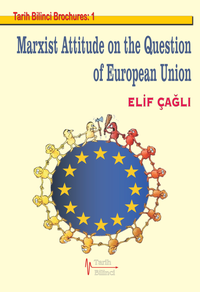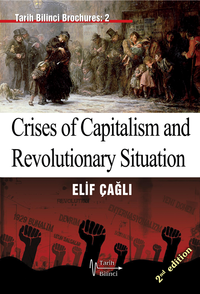The Communist Manifesto, written by Marx and Engels nearly 150 years ago, began: “A spectre is haunting Europe: Communism.” This spectre of communism, which means the historical action of the working class to abolish the capitalist system of exploitation, made its presence felt not only in Europe but also on almost all continents in the long years that followed the publication of the Manifesto. In the graph of the action of the working class, the October Revolution of 1917 represented the peak of the upswing. It was indeed a workers’ revolution in which the proletariat participated and which developed directly on its initiative and was crowned with its power.
However, this great workers’ revolution and the workers’ state (the power of the workers’ soviets), which emerged on the stage of history as its fruit, was liquidated very soon afterwards by a bureaucratic counter-revolution that operated from within. Many proletarian revolutionary leaders and militants were killed in this counter-revolution. In the name of building a “socialist” society on a national scale, a despotic-bureaucratic state order was established. Stalinism (official communism) marked a long period of time at the ideological level and in practical politics. The bureaucratic rule, identified with the name of Stalin, the leading actor of this dark period in the history of socialist struggle, caused great damage to the world labour movement and the communist struggle. In order to prevent and weaken the labour movement in the West, the world bourgeoisie used all the anti-socialist practices of Stalinism in the Soviet Union as propaganda material in its own interests. Stalinism, which descended on Marxism like a nightmare, thus both ideologically strengthened the hand of the bourgeoisie and, with the negative example it set, created a de facto obstacle to the struggle for socialism in the world.
In addition to the damage caused by Stalinism, the ideological atmosphere created by the pseudo-Marxist intellectuals, who actually went so far as to become enemies of Marxism, provided the world bourgeoisie with rich material in its efforts to discredit the communist struggle. Then came the political chaos in which despotic-bureaucratic dictatorships collapsed one by one and the old official communist parties disappeared. As if to relegate the damage caused by Stalinism to Marxism for many years to the background, a much more open period of attack on Marxist thought was launched. During this period, the ideological campaign of attack by the bourgeois camp reached unprecedented heights. In this period of crusade against socialism by bourgeois ideologues, who at every opportunity repeated the refrain that “Marxism is dead”, it finally became fashionable to declare that “the proletariat as a class is also dead”. Thus, it was as if the way was being paved for the total liberation from the working class, which had once, to one extent or another, given the bourgeoisie fearful times…
But in spite of the intensity, prevalence and impact of the propaganda, this enthusiasm of the bourgeoisie was in reality only a mirage. For, in the years following the collapse of the so-called socialist regimes, the labour movement, which had begun to recover, albeit slowly, was revealing that the historical source of unrest of the world bourgeoisie had not dried up and would not dry up.
Nevertheless, crafty ideologues like Fukuyama, who in reality sought to consolidate the dominance of bourgeois ideology by declaring that “the age of ideologies is over”, were deluding themselves with tales that capitalism had finally found the elixir of immortality. Francis Fukuyama, famous for his article The End of History, interpreted the collapse of the Soviet Union and Eastern European countries and the liberalisation in China as the end of history. According to him, with the crisis of communism, all obstacles to liberalism had been removed, so that ideologies would now be replaced by capitalism's endeavour for economic development. The empty propaganda balloon of the world capitalist system, which tried to seize the collapse of the Stalinist regimes as a historical opportunity since it was unable and would never be able to find a solution to its own crises, thus floated in the air for some time.
But in reality, this balloon is destined to wait for the day when a fermenting economic and political crisis will surface and burst itself with its poisonous sting. Eventually this bubble will burst. The working class, which the bourgeoisie has tried to ignore and disregard during a period when the capitalist economy was on the upswing, reassuring its own system, is now calling out to the world with its movement, which is slowly preparing to take the offensive again in various countries: He who laughs last, laughs best!
Capitalist development has created a single capitalist world system by dissolving the countryside, proletarianising the labourer, making the old modes and relations of production obsolete. In such a world, approaches that try to ignore or overshadow the power of the working class are now completely deluding themselves. Because, in reality, the proletariat is the class that today has the greatest weight among the entire world population. Therefore, there is no longer any ground on which Stalinist conceptions such as the “revolution in stages”, which, as in the recent past of the leftist movement in Turkey, advanced on the grounds of the predominance of the peasantry, can stand.
It is the globalised proletariat, not the “popular alliances” dominated by the petty-bourgeoisie, that is ringing the danger bells of the globalising capitalist order of exploitation. Our aim in this book is to clarify the reality of the working class in various aspects under the shining scientific light of Marxism. The plain truth revealed by this study, which is carried out on the basis of the analyses of Marxist theory without being deceived by the distortions of bourgeois statistics and without drowning the reader in figures, is this: The working class is growing, in spite of those who want to say goodbye to it or try to downplay it.
Source:
link: Elif Çağlı, Preface, October 1999, https://enternasyonalizm.org/node/630






